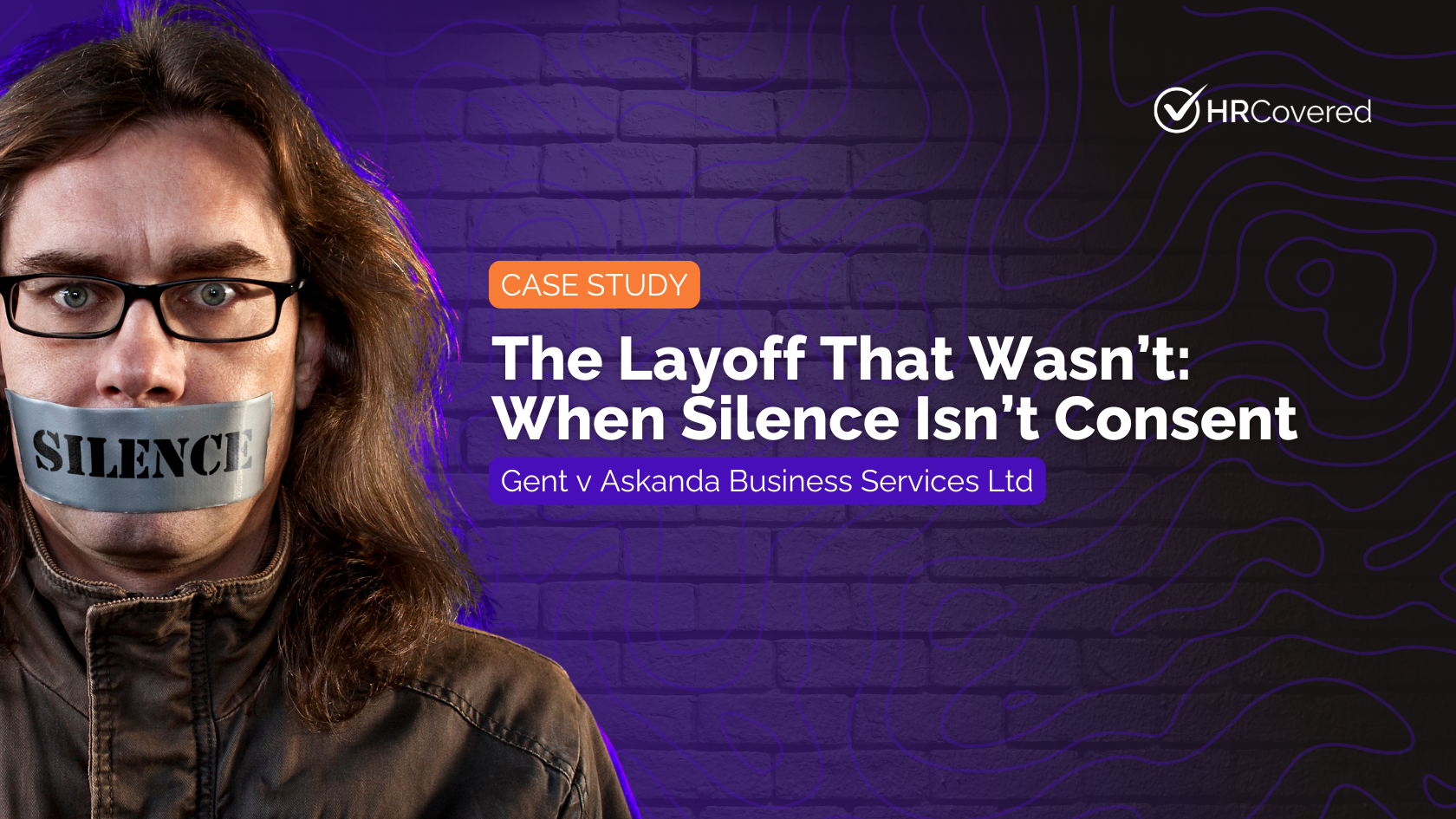Gent v Askanda Business Services Ltd., 2025 BCSC 1278
Background
Bradley Gent had been the backbone of Askanda Business Services Ltd. since 1987, performing most of the servicing work for draft beer equipment. In March 2020, the COVID-19 pandemic forced a temporary layoff of Mr. Gent, and Askanda’s owner, Mr. Jeremy Hollands, assumed that Mr. Gent had voluntarily retired following a brief phone conversation in May 2020. Over a year later, Mr. Gent discovered he had not been formally terminated and sued for wrongful dismissal.
The central questions were:
- Did Mr. Gent resign in May 2020?
- Was he wrongfully dismissed by Askanda?
- If so, what was the proper termination date, and what damages were owed?
Termination Clause / Employment Considerations
Since Mr. Gent had no formal written employment contract, key statutory and common law principles applied:
- ESA Deemed Termination: Under s. 63(5) of the Employment Standards Act (ESA, BC), failure to recall an employee after the statutory layoff period (extended to August 30, 2020 during COVID-19) constitutes a deemed termination.
- Common Law Wrongful Dismissal: The court emphasized that a constructive dismissal arises when an employer fails to recall an employee after a temporary layoff without obtaining consent for an extension.
- Reasonable Notice: Based on Mr. Gent’s age, length of service (over 30 years), and niche experience, the court determined a reasonable notice period of 6 months, reflecting his intended retirement date of February 2022.
Key Findings
- No Clear Resignation
- Mr. Gent’s statement about “might as well retire” was equivocal and insufficient for a finding of resignation.
- Employers must clarify ambiguous employee statements and confirm effective dates of resignation to avoid legal risk.
- Wrongful Dismissal Confirmed
- Askanda’s failure to recall Mr. Gent after August 30, 2020 constituted a constructive dismissal.
- Employer assumptions about retirement or resignation do not replace formal communication or consent.
- Termination Date Determined
- While the ESA deems the termination date as the start of the layoff (March 18, 2020), the court set a fair common law termination date as September 1, 2021, based on reasonable expectations and fairness.
- Damages Calculated
- Given Mr. Gent’s intention to retire at 65, his notice period was limited to 6 months.
- As an hourly employee, damages were calculated based on the average of his three-year pre-layoff income (~$29,000), resulting in $14,500 in pay in lieu of notice.
Takeaways for Employers and Business Owners
- Clarify Ambiguous Statements Immediately
- Any employee remarks about “retirement” or leaving work must be followed up with in writing to prevent misunderstandings.
- Temporary Layoffs Have Legal Deadlines
- Not recalling employees at the end of the statutory layoff period without consent can trigger constructive dismissal claims.
- Document Communications Carefully
- Keep accurate records of layoffs, recalls, and employee statements. Misplaced assumptions or vague recollections are unlikely to protect the employer in court.
- Consider Common Law vs. ESA Entitlements
- ESA deemed termination is distinct from common law reasonable notice. Employers should consider both statutory and common law obligations when assessing termination risk.
- Plan for Employee Retirement and Long-Term Absences
- Even in friendly, long-term employment relationships, employers must formalize retirement plans to avoid claims of wrongful dismissal or ambiguity in termination dates.
Bottom Line
Gent v Askanda serves as a cautionary tale for employers: vague statements and assumptions cannot replace formal communication. Failing to recall an employee after a statutory layoff, or assuming retirement without confirmation, can lead to a costly constructive dismissal claim—even in long-standing, positive employment relationships.
HRC Tip: Consider the use of a “Confirmation of Resignation Letter” when you are provided a verbal resignation and the employee has yet to submit their resignation in writing. This will also help to guide you in the conversation that needs to be had with the employee. We’re here to help guide you through this process, just Contact Us for help.
Citation: 2025 BCSC 1278 (CanLII) | Gent v Askanda Business Services Ltd. | CanLII

